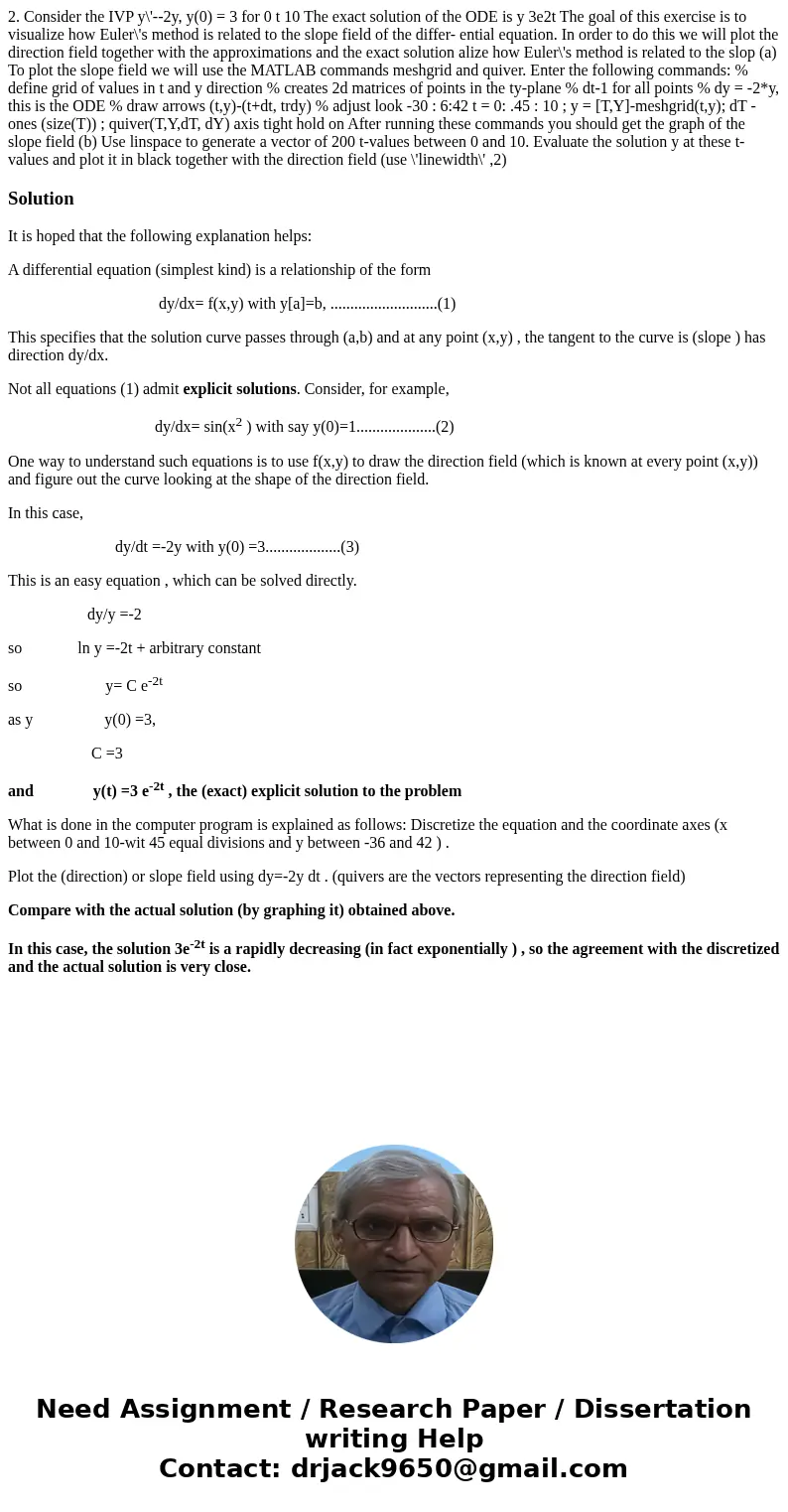2 Consider the IVP y2y y0 3 for 0 t 10 The exact solution o
Solution
It is hoped that the following explanation helps:
A differential equation (simplest kind) is a relationship of the form
dy/dx= f(x,y) with y[a]=b, ...........................(1)
This specifies that the solution curve passes through (a,b) and at any point (x,y) , the tangent to the curve is (slope ) has direction dy/dx.
Not all equations (1) admit explicit solutions. Consider, for example,
dy/dx= sin(x2 ) with say y(0)=1....................(2)
One way to understand such equations is to use f(x,y) to draw the direction field (which is known at every point (x,y)) and figure out the curve looking at the shape of the direction field.
In this case,
dy/dt =-2y with y(0) =3...................(3)
This is an easy equation , which can be solved directly.
dy/y =-2
so ln y =-2t + arbitrary constant
so y= C e-2t
as y y(0) =3,
C =3
and y(t) =3 e-2t , the (exact) explicit solution to the problem
What is done in the computer program is explained as follows: Discretize the equation and the coordinate axes (x between 0 and 10-wit 45 equal divisions and y between -36 and 42 ) .
Plot the (direction) or slope field using dy=-2y dt . (quivers are the vectors representing the direction field)
Compare with the actual solution (by graphing it) obtained above.
In this case, the solution 3e-2t is a rapidly decreasing (in fact exponentially ) , so the agreement with the discretized and the actual solution is very close.

 Homework Sourse
Homework Sourse